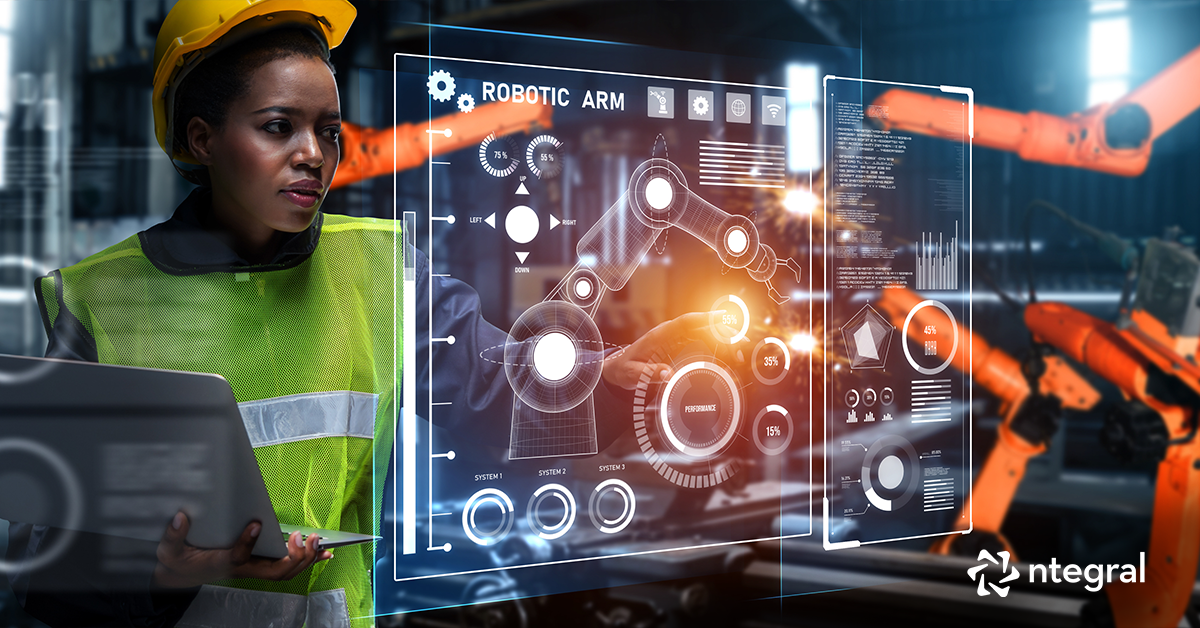Amazon Linux 2023 Vs. Amazon Linux 2
Compare Amazon Linux 2 and its newer version, Amazon Linux 2023. We discuss their performance, security, compatibility, and how to choose the right one for your needs.
trending_up Technology
Do you have questions about the latest updates to Amazon Linux? Look no further! In this article, we'll explore the advantages and updates of both Amazon Linux 2023 and Amazon Linux 2, giving you all the information you need to make an informed decision for your business.
As technology advances, it's crucial to stay up-to-date with the latest features and enhancements. Amazon Linux is known for its reliability, security, and performance, making it a popular choice among developers and businesses alike. By comparing Amazon Linux 2023 and Amazon Linux 2, we'll uncover the key differences and improvements in terms of stability, scalability, and compatibility with various applications and services.
Whether you're looking to migrate to the latest version, or you're considering Amazon Linux for the first time, this article will provide you with valuable insights to help you make the right choice. So, let's dive in and discover what the latest updates have to offer in terms of optimization, security enhancements, and overall user experience.
Advantages of Amazon Linux 2
Amazon Linux 2 has established itself as a robust and reliable operating system tailored for cloud applications.
Long-term support: Offers extended support for stability and security, ensuring a reliable environment for production workloads.
Compatibility: Works well with existing applications and services, streamlining the deployment process and reducing migration efforts.
Pre-installed development tools: Comes with essential tools and libraries, enhancing productivity and reducing setup time.
Optimized performance: Designed for AWS cloud environments, providing faster boot times, lower latency, and efficient resource utilization.
Scalability: Supports a wide range of instance types and configurations, allowing businesses to scale their applications effectively to meet changing demands.
Updates and improvements in Amazon Linux 2023
Amazon Linux 2023 introduces several exciting updates that enhance both functionality and user experience.
Latest software packages: Provides access to the newest versions of popular software, ensuring users have the latest features and security enhancements.
Improved AWS integration: Offers enhanced support for containerization and orchestration technologies like Docker and Kubernetes, streamlining application development, deployment, and management.
Enhanced security: Includes advanced security features such as improved access controls, enhanced logging, and built-in support for security compliance frameworks, helping organizations protect sensitive data and meet regulatory requirements.
Performance comparison between Amazon Linux 2 and Amazon Linux 2023
When comparing the performance of Amazon Linux 2 and Amazon Linux 2023, several key factors come into play. Amazon Linux 2023 is optimized for the latest hardware and software advancements, which translates to improved speed and efficiency. Users have reported faster boot times and reduced latency in application responses, making it an attractive option for businesses that prioritize high performance. The enhancements in resource management also allow for better utilization of CPU and memory, which can lead to cost savings in cloud infrastructure.
Another aspect to consider is the support for modern development paradigms in Amazon Linux 2023. The latest version is designed to work seamlessly with containerized applications, offering better performance when deploying microservices. This is particularly beneficial for organizations adopting DevOps practices, as it allows for rapid scaling and efficient resource allocation. In contrast, while Amazon Linux 2 performs admirably, it may not fully leverage the advancements available in the newer version, particularly in terms of container orchestration.
Lastly, benchmarking tests have shown that Amazon Linux 2023 can handle workloads more effectively than its predecessor. In various scenarios, including web serving, database operations, and data processing, the newer version consistently outperforms Amazon Linux 2. This performance edge can be critical for businesses looking to optimize their cloud operations and deliver a superior user experience. Therefore, while both versions are capable, Amazon Linux 2023 stands out as the more efficient and powerful option for demanding workloads.
Security features in Amazon Linux 2 and Amazon Linux 2023
Security is a paramount concern for any organization operating in the cloud, and both Amazon Linux 2 and Amazon Linux 2023 offer robust security features. Amazon Linux 2 has a strong focus on providing a secure operating environment, with regular updates and patches to address vulnerabilities. It includes built-in security tools such as the Amazon Inspector, which helps identify potential security issues in applications. Furthermore, Amazon Linux 2 supports secure boot and has a minimal attack surface, reducing the risk of exploits.
On the other hand, Amazon Linux 2023 takes security to the next level by integrating advanced features that respond to evolving threats. One of the significant enhancements is the introduction of more granular access controls, allowing organizations to implement the principle of least privilege effectively. This feature enables users to define permissions more accurately, minimizing the risk of unauthorized access. Additionally, Amazon Linux 2023 incorporates improved logging and monitoring capabilities, which help organizations detect and respond to potential security incidents in real time.
Moreover, the newer version also emphasizes compliance with industry standards and regulations. Amazon Linux 2023 includes built-in tools to assist with compliance audits, making it easier for organizations to adhere to frameworks such as PCI DSS, HIPAA, and GDPR. This focus on compliance not only protects sensitive data but also helps organizations avoid costly fines and reputational damage associated with breaches. Thus, while both versions prioritize security, Amazon Linux 2023 offers enhanced features that better equip organizations to tackle contemporary security challenges.
Compatibility and migration considerations
When it comes to compatibility, Amazon Linux 2 has established itself as a reliable choice for many applications. Its design is rooted in popular open-source technologies, which ensures that most applications can run without significant modifications. For organizations already using Amazon Linux 2, moving to the latest version presents both opportunities and challenges. While the underlying architecture remains similar, there may be some differences in package management and system libraries that could require adjustments during migration.
Amazon Linux 2023 is designed to be compatible with a wide range of cloud-native applications, particularly those that utilize containers. However, organizations must consider the specific dependencies of their applications before migrating. Some packages may have been updated or deprecated, and it's essential to review these changes to avoid disruptions. Conducting thorough testing in a staging environment can help identify any potential compatibility issues before a full-scale migration.
Additionally, organizations should evaluate their migration strategy carefully. Whether opting for a lift-and-shift approach or a more gradual transition, planning is crucial. It may be beneficial to leverage AWS tools such as AWS Migration Hub or AWS Application Discovery Service to assess the current environment and streamline the migration process. By doing so, organizations can minimize downtime and ensure a smooth transition to Amazon Linux 2023, reaping the benefits of the latest features and enhancements.
Choosing the right version for your needs
Deciding between Amazon Linux 2 and Amazon Linux 2023 ultimately depends on an organization’s specific requirements and use cases. If a business prioritizes stability and long-term support, Amazon Linux 2 remains an excellent choice. Its established ecosystem provides a dependable environment for critical applications that require minimal changes. Organizations that have existing workloads running on Amazon Linux 2 may find it more convenient to stick with this version, as it allows them to maintain consistency while benefiting from regular updates.
Conversely, if an organization is looking to leverage the latest technologies and enhancements, Amazon Linux 2023 is the way to go. The new version is designed with modern cloud-native applications in mind, offering improved performance, security features, and better integration with AWS services. For businesses that are starting new projects or are in the process of modernizing their existing applications, adopting Amazon Linux 2023 can provide significant advantages and future-proof their infrastructure.
Ultimately, it’s essential to consider both current needs and future growth when making this decision. Organizations should assess their development practices, application requirements, and long-term goals. By carefully evaluating these factors, businesses can choose the version that aligns best with their operational strategy and positions them for success in the ever-evolving cloud landscape.
Best practices for using Amazon Linux in your infrastructure
To maximize the benefits of Amazon Linux, organizations should adhere to several best practices. First, it’s essential to keep the system up to date with regular security patches and updates. Both Amazon Linux 2 and Amazon Linux 2023 provide mechanisms for automatic updates, which can help ensure that systems remain secure without requiring constant manual intervention. Regularly checking for updates and applying them promptly can significantly reduce the risk of vulnerabilities.
Another best practice is to utilize AWS monitoring and logging services to gain insights into system performance and security. Tools such as Amazon CloudWatch and AWS CloudTrail can provide valuable data on resource utilization, application performance, and user activity. By analyzing this data, organizations can identify potential issues early, optimize system performance, and maintain compliance with regulatory requirements.
Finally, organizations should foster a culture of continuous improvement by regularly reviewing their infrastructure and application performance. This includes conducting periodic assessments of configurations, resource usage, and security measures. By staying proactive and making necessary adjustments, businesses can ensure that their use of Amazon Linux remains efficient, secure, and aligned with their evolving needs.
Conclusion
In conclusion, both Amazon Linux 2 and Amazon Linux 2023 offer valuable features and capabilities tailored for different organizational needs. Amazon Linux 2 provides a stable and reliable environment for businesses that prioritize long-term support and compatibility with existing applications. In contrast, Amazon Linux 2023 brings modern enhancements, improved performance, and advanced security features that are ideal for organizations looking to leverage the latest technologies.
When making the decision between these two versions, businesses should consider their specific requirements, existing workloads, and future growth plans. By carefully evaluating these factors and following best practices for migration and management, organizations can ensure a successful implementation of Amazon Linux within their infrastructure.
Ultimately, staying current with the latest advancements in technology is crucial for maintaining a competitive edge. By choosing the right version of Amazon Linux and optimizing its use within their cloud environment, organizations can unlock new opportunities for innovation and growth.
See other insights
You may also enjoy these additional related insights
10 Biggest Impacts of Cloud Migration in the Manufacturing Industry The manufacturing industry increasingly embraces cloud migration, which involves moving
As cloud technology continues to grow and transform the computing world, keeping up with the constantly evolving influx of technical terms and jargon can be cha

